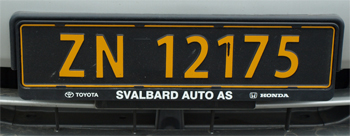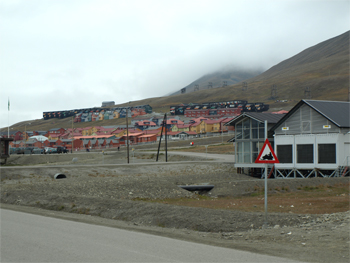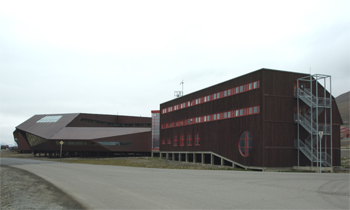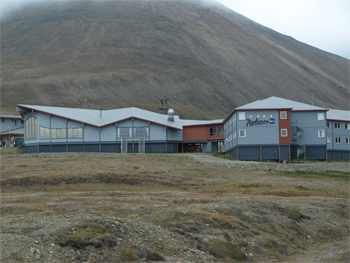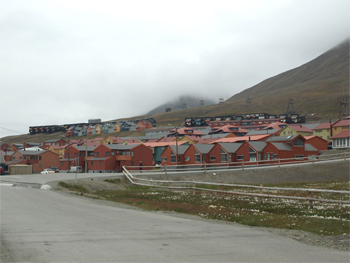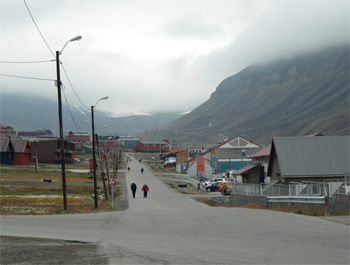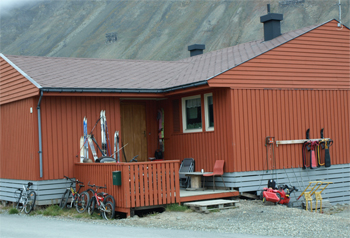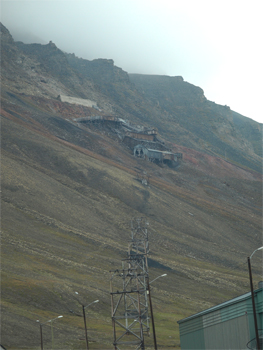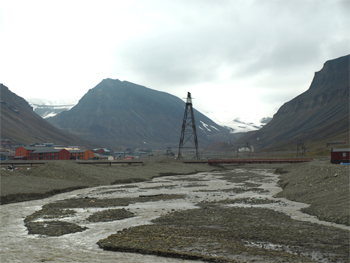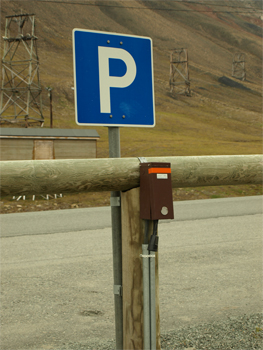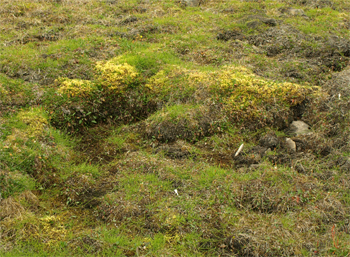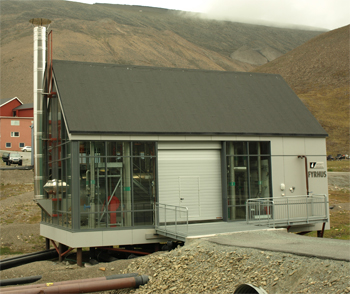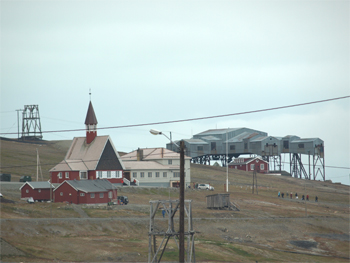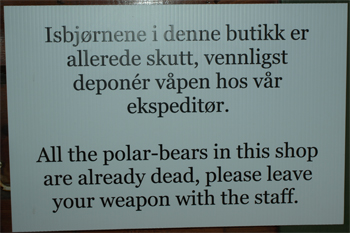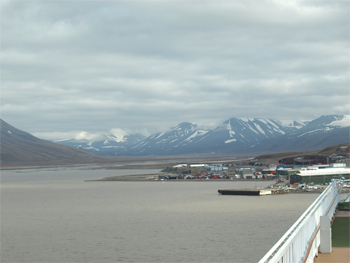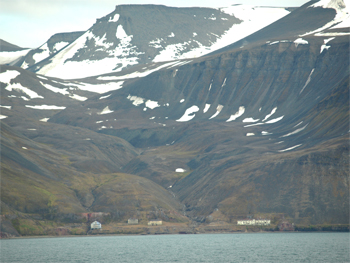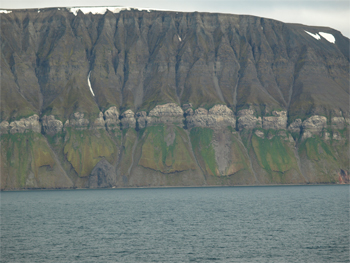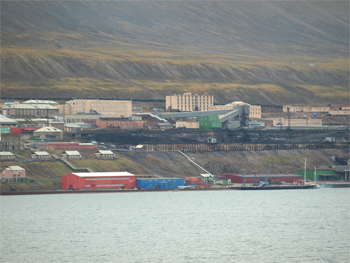Wed. 8/4/10 - Longyearbyen, Spitsbergen, Svalbard Archipelago, Norway - 78° 13' North Latitude
This was a very unique port-of-call. The small settlement (now has 1800 of the 3000 people in Svalbard) was founded in 1906 by the American coal mining entrepreneur, John Longyear. He was the principle owner of the Arctic Coal Co. of Boston. The seams of coal are very obvious and close to the surface on the glaciated moraines. The coal resulted from trees and vegetation that covered these islands "before they drifted north from a more tropical climate below 50° latitude." We have not figured out how the islands moved north!
At the beginning of WWII the inhabitants were evacuated to Great Britain and the coal mines were burned to keep the Germans from accessing the coal.
Since the war, some of the mining towns have been revived to house polar exploration, research, and communication. Tourism is a small business here. There is a university in Longyearbyen that specializes in polar research and a wonderful small museum tracing the history of whaling, coal mining, and exploration and information on the various polar animals - bears, seals, walrus, arctic fox, ptarmigan, blue fox, reindeer, etc. We had to wear disposable covers over our boots to protect the floor.
|
Norwegian license plate for Svalbard |
Approaching Longyearbyen
|
Coal mine, dreary clouds, brightly colored buildings |
Interesting sign and bright housing
|
Museum (background) and University building |
This is probably not the fanciest Radisson Hotel you ever saw - but at least there is a hotel
|
Typical housing and low clouds |
Summer parking lot for snow machines |
Typical street
|
Home with storage for different sorts of equipment |
Abandoned mine entrance
|
Mine structure and local cemetery
|
Coal mine |
We were warned not to wander too far out of town without an escort with a high-powered rifle because of the possibility of meeting a polar bear. We were told that people wander town with rifles for the same reason. We saw no rifles, no bears and enjoyed walking out of town to get better looks at the ruins of several coal mines.
|
|
Surrounding hills and snow fields
|
Rather barren landscape |
Parking with a plug-in for winter
|
School with ski racks rather than bike racks |
Tundra |
Geothermal heat pumping station
|
Church and coal mine buildings
|
We liked this sign |
In town there were several interesting shops: fancy Norwegian sweaters and woolens, outdoor clothing and camping and boating gear (very interesting), a well stocked grocery and house goods store and, of course, a few shops of souvenirs and animal pelts that customs would not permit into the US. Outside of town is a worldwide seed bank built into a mountain. It stores seeds from all crops around the world at a perfect low temperature. All countries of the world are able to deposit seeds here to guard against terrible earthly destruction or for genetic research, etc. There is even an airstrip for commercial planes.
|
|
Sailing away from Longyearbyen
|
Glacier in the distance |
On the way out of the Isfjorden (Ice Fjord) our lecturer talked more about the fjords, the water, the glaciers, etc. The morning fog lifted and we had very good views of the many glaciers along the Isfjorden. The captain detoured and took us passed Barentsburg, the last Russian settlement in Svalbard. After WWII there were 2500 Soviets here "mining coal." Now there are 450 Russians, not mining any coal and living in the derelict Soviet square block apartments among the slag heaps. It is not very attractive and they are probably still keeping an eye on the rest of the world from this northerly position.
|
|
Isolated houses along the fjord
|
Geology and lichens |
Barentsburg
|
Barentsburg |
We have been north of the Arctic Circle for four days now and have not had a sunset or even a twilight! The nights keep getting brighter! It is very disorienting when you wake up at night and think you should get up but it is only 2 AM! In Svalbard this year the sun rose on April 19 and did not set until August 24. Conversely, the sun will set October 27 and not rise again until February 15, 2011.
Dinner was exceptionally good tonight. Marge had sweet and sour shrimp with three huge breaded shrimp and I had a tarragon chicken breast with a wonderful sauce. The appetizers, soups, and desserts were also unique and very tasty. We went to hear Vladimir Zaitsev play the piano again tonight after dinner.
| Return to Top | Return to Itinerary | Return to Dreamcatcher Home Page |

